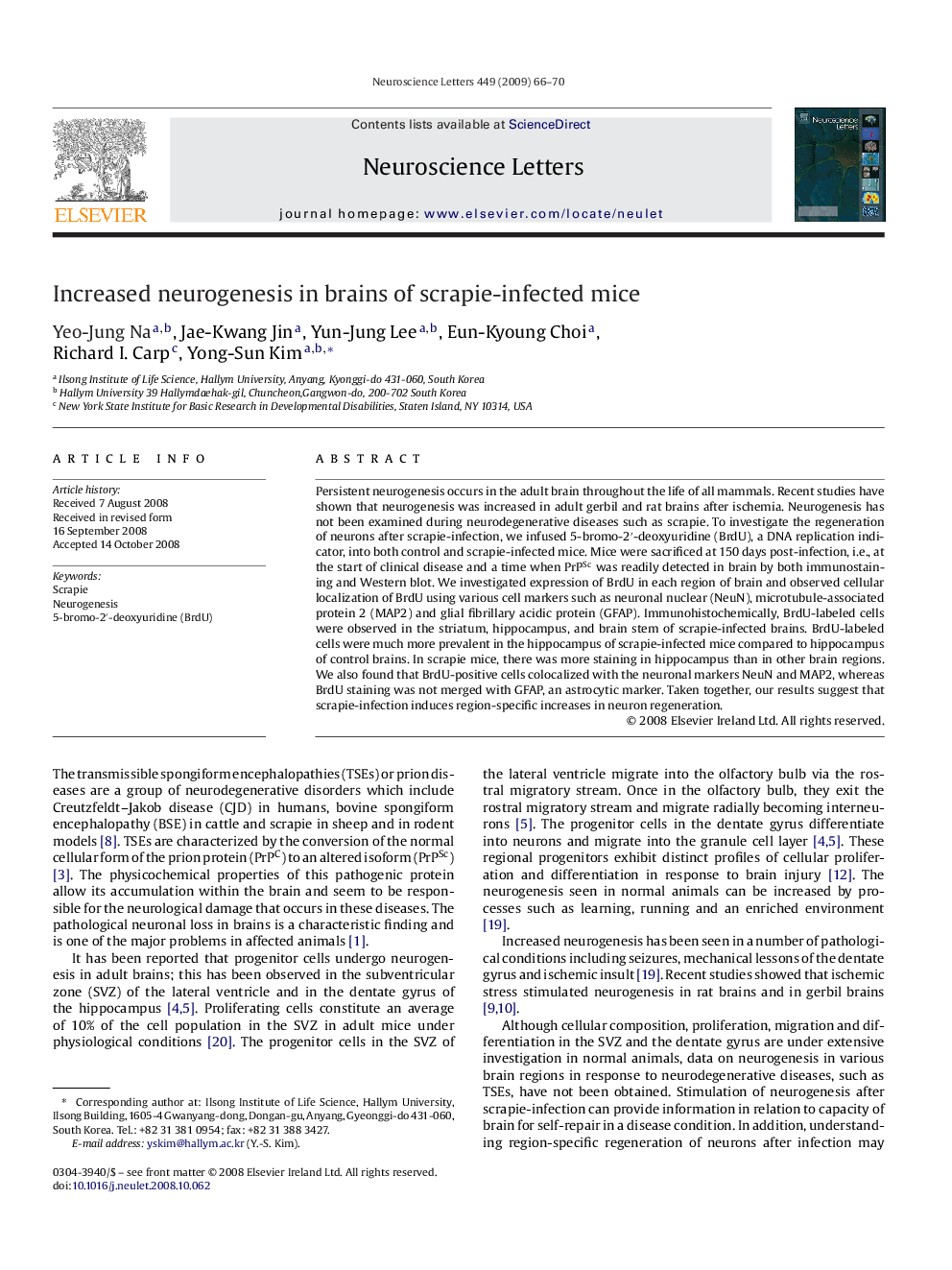| Article ID | Journal | Published Year | Pages | File Type |
|---|---|---|---|---|
| 4347967 | Neuroscience Letters | 2009 | 5 Pages |
Persistent neurogenesis occurs in the adult brain throughout the life of all mammals. Recent studies have shown that neurogenesis was increased in adult gerbil and rat brains after ischemia. Neurogenesis has not been examined during neurodegenerative diseases such as scrapie. To investigate the regeneration of neurons after scrapie-infection, we infused 5-bromo-2′-deoxyuridine (BrdU), a DNA replication indicator, into both control and scrapie-infected mice. Mice were sacrificed at 150 days post-infection, i.e., at the start of clinical disease and a time when PrPSc was readily detected in brain by both immunostaining and Western blot. We investigated expression of BrdU in each region of brain and observed cellular localization of BrdU using various cell markers such as neuronal nuclear (NeuN), microtubule-associated protein 2 (MAP2) and glial fibrillary acidic protein (GFAP). Immunohistochemically, BrdU-labeled cells were observed in the striatum, hippocampus, and brain stem of scrapie-infected brains. BrdU-labeled cells were much more prevalent in the hippocampus of scrapie-infected mice compared to hippocampus of control brains. In scrapie mice, there was more staining in hippocampus than in other brain regions. We also found that BrdU-positive cells colocalized with the neuronal markers NeuN and MAP2, whereas BrdU staining was not merged with GFAP, an astrocytic marker. Taken together, our results suggest that scrapie-infection induces region-specific increases in neuron regeneration.
